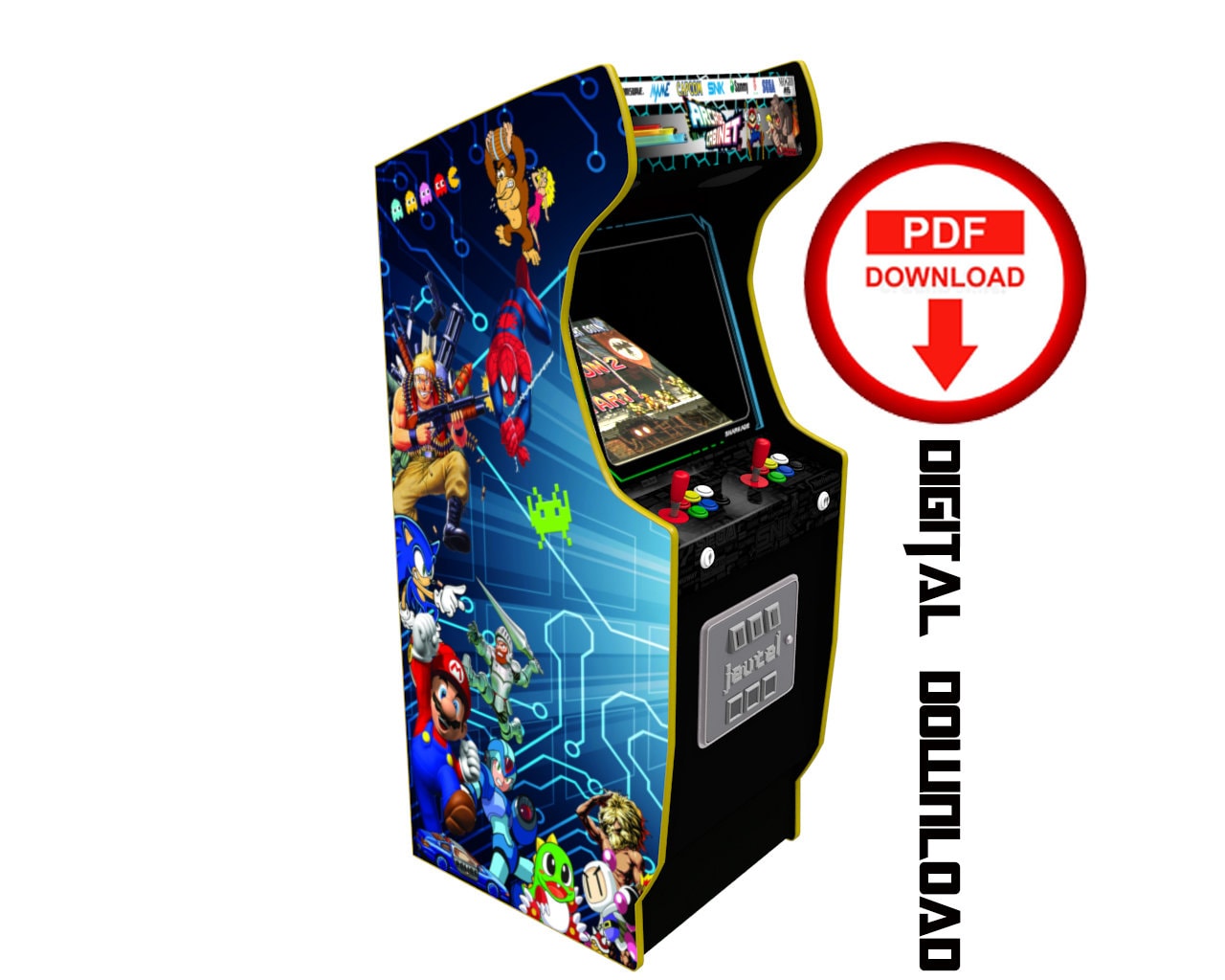Level Up Your Arcade Cabinet: A Deep Dive into graphics
Building an arcade cabinet is a labor of love, a journey into nostalgia and hands-on creation. But beyond the joysticks and buttons, the heart of your arcade experience lies in its visual presentation. The graphics – from the side art to the marquee and control panel – are what transform a simple box into a portal to pixelated paradise. This comprehensive guide will explore the world of arcade cabinet graphics, covering everything from design principles to printing techniques and application methods.
Understanding the Importance of Arcade Graphics
Graphics aren’t just pretty pictures; they’re the soul of your arcade cabinet. They evoke the spirit of the games you’re showcasing, setting the mood and drawing players in. A well-designed cabinet can be a conversation starter, a centerpiece in your game room, and a source of endless enjoyment. Conversely, poorly chosen or badly executed graphics can detract from the overall experience, making even the most meticulously built cabinet look amateurish.

Key Elements of Arcade Cabinet Graphics
A classic arcade cabinet typically features several key graphic elements:

Designing Your Arcade Graphics
Designing your arcade graphics is where your creativity comes into play. You have several options:
Choosing the Right Printing Method
Once your design is finalized, you’ll need to choose a printing method. The most common options are:
Selecting the Right Material
The material you print your graphics on is just as important as the design itself. Here are some popular choices:
Applying Your Arcade Graphics
Applying your graphics requires patience and attention to detail. Here’s a general process:
Protecting Your Arcade Graphics
To ensure the longevity of your graphics, consider these protective measures:
Choosing a Theme for Your Arcade Cabinet
The theme of your arcade cabinet is the overarching aesthetic that ties all the graphic elements together. Consider these factors when choosing a theme:
Finding Inspiration for Your Arcade Graphics
If you’re struggling to come up with design ideas, here are some resources for inspiration:
Creating a Cohesive Look
To create a cohesive look for your arcade cabinet, ensure that all the graphic elements complement each other. Use a consistent color palette, font, and style across all the graphics.
The Importance of Color Choice
Color plays a vital role in the overall look of your arcade cabinet. Choose colors that evoke the feeling you want to create. Bright, vibrant colors can create an energetic and exciting atmosphere, while darker, more muted colors can create a more sophisticated look.
Font Selection for Arcade Graphics
The font you choose for your arcade graphics can significantly impact the overall aesthetic. Consider using fonts that are reminiscent of classic arcade games or fonts that complement your chosen theme.
Working with Vector Graphics
Vector graphics are ideal for arcade graphics because they can be scaled to any size without losing quality. Software like Adobe Illustrator and Inkscape are popular choices for creating vector graphics.
Raster Graphics and Their Limitations
Raster graphics, such as JPEGs and PNGs, are made up of pixels and can become blurry when scaled up. While they can be used for some smaller graphics, they’re generally not recommended for large format prints.
Understanding Resolution and DPI
Resolution and DPI (dots per inch) are important factors to consider when printing your arcade graphics. Higher DPI settings result in sharper prints.
Preparing Your Files for Printing
Before sending your files to the print shop, ensure they are in the correct format and resolution. Consult with your print shop for their specific requirements.
Working with a Print Shop
When working with a print shop, communicate your needs clearly and provide them with all the necessary files and specifications.
The Finishing Touches
Once your graphics are applied, add any finishing touches, such as t-molding or edge banding, to complete the look of your arcade cabinet.
Maintaining Your Arcade Graphics
To keep your arcade graphics looking their best, clean them regularly with a soft cloth and mild detergent. Avoid using harsh chemicals or abrasive cleaners.
Conclusion
Creating stunning arcade graphics is an essential part of building a truly memorable arcade cabinet. By understanding the principles of design, printing, and application, you can transform a simple box into a work of art that will bring you and your friends countless hours of enjoyment. So, unleash your creativity, embrace the world of pixelated art, and level up your arcade cabinet with graphics that are as captivating as the games themselves.
graphics for arcade cabinet
